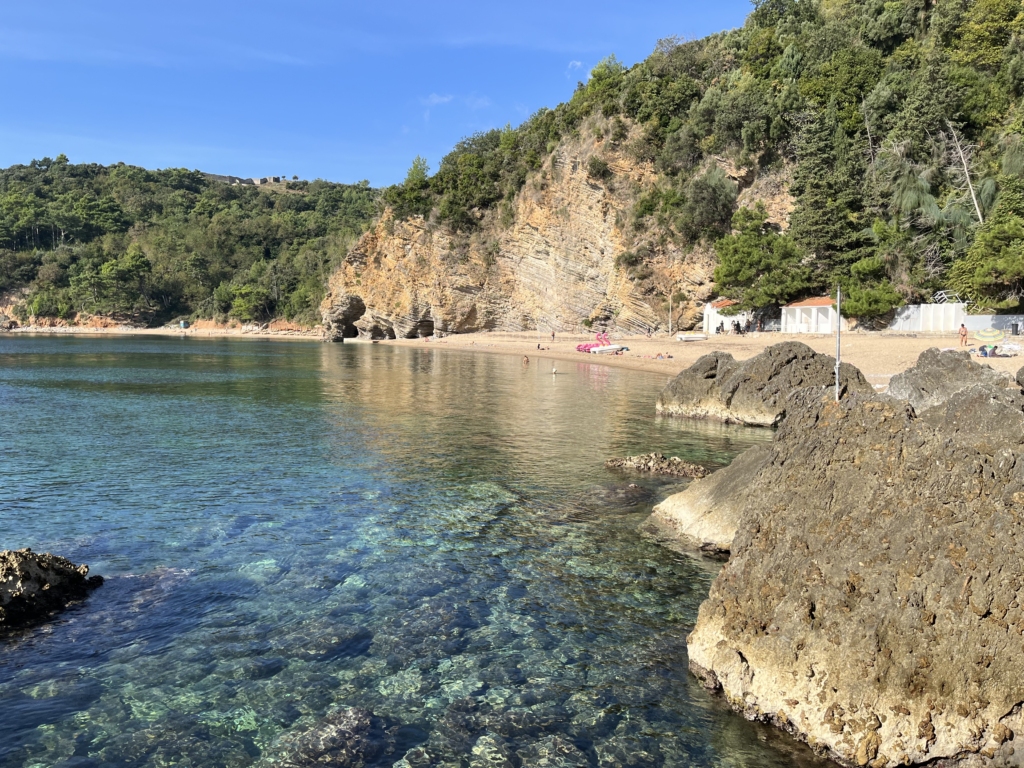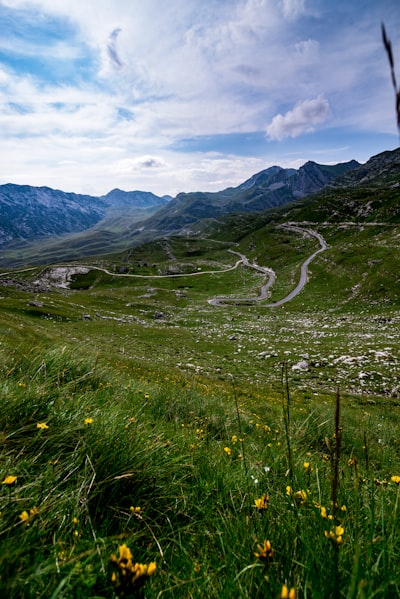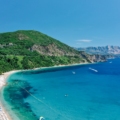We know, trust us, we’ve been in your position before. Summer is looming large, and the decision on a holiday destination needs to be made. Will you choose Croatia, or does Montenegro await? Will you enjoy the delightful Dalmatian Coast or the conveyor belt of charm Montenegro has in spades? It isn’t the easiest choice in the world, but we’re here to do the hard work and lay it all out on the table for you.

Of course, the very name of this website suggests a teeny bit of bias, but we’re not going to dismiss Croatia out of hand. There are no wrong answers here, but which is right for you?
Geography and Climate
Say what you like about the weather (and as small talk experts, we do), but it plays an undeniably large role in choosing a holiday destination. What is the weather like in Montenegro and Croatia? Obviously, it depends on where you go, but the two share a sea border on the Adriatic Sea, meaning Mediterranean summers and cool winters.
Don’t make the mistake of assuming both countries are all sea; Croatia and Montenegro have mountainous hinterlands, and winters can get pretty cold in those parts. Covering just over 13,800 square kilometres, Montenegro is much smaller than Croatia, which spreads over 56,500 square kilometres.
What is the weather like in Montenegro?
No matter the type of vacation you desire, Montenegro has the weather for the occasion. Its 293km coast is rapidly gaining mainstream attention, thanks to a stunning stretch of beaches and gorgeous old towns, while the interior mountains provide some of the most spectacular scenery in Europe. Summers on the coast are hot, and winters in the mountains are snow-covered and cold.
What is the weather like in Croatia?
If Montenegro’s coast is small but perfectly formed, Croatia’s seaside is all about quantity and quality. It stretches for 5,835km, with more than a thousand islands (many of which are uninhabited) and iconic towns from the north to the south. The inland covers the Dinaric Alps and the flatlands of Slavonia, although that is just the tip of the iceberg. As with Montenegro, summers on the coast are hot, and winters inland can be pretty chilly.

Culture and History
As anyone who has travelled to this part of the world can attest, history and culture are two sides of the same coin. While Croatia and Montenegro were both republics within Yugoslavia, their histories don’t follow exactly the same path.
Montenegro’s Culture and History
Montenegro’s history depends on where you are in the country. Spend your time by the sea, and the influence of the Venetians is everywhere, with dashes of ancient Illyria and Rome around each corner. Head into the mountains around Cetinje, and you get Montenegro at its most Montenegrin, a defiant nation famous for its refusal to submit. The Ottomans left their mark around the country, and the architectural reminders of 20th-century socialism are plain to see.

The Montenegrins have long existed in spite of the greed of neighbouring powers, and that independence flows through literature, art, music and festivals. One man stands tall above everyone else in Montenegrin history — Petar II Petrović-Njegoš, the 19th-century poet-prince who organised the Montenegrins and wrote some epic poetry in the process.
Croatia’s Culture and History
While the stories differ, Croatia takes just as much pride in its history and culture as Montenegro. A cursory glance at the country’s shape will show you that Croatia has an immensely varied culture, with the coast’s seafaring traditions at odds with the agricultural heritage found in Slavonia and the surrounding areas. Many powers have moved through these parts, from Rome to Venice via Hungary, Austria, Germany and 20th-century socialism, but the Croat love of nation has remained. Croats have left their mark on a broad range of subjects, from the art of Ivan Meštrović to the polymathic innovations of Rudjer Bošković and the incredible achievements of 21st-century athletes. The influences in Dubrovnik aren’t the same as those in Zagreb, but a sense of national pride is at the heart of everything.
Beaches and Natural Wonders
Here we go, this is what you’ve come to see. How do the beaches in Montenegro and Croatia stack up against each other? The coast is the centre of tourism in both countries, and these stretches of sand have a lot to do with that.
Montenegro’s Beaches and Natural Wonders
Montenegro is much smaller than Croatia, but its beaches are definitely a case of quality over quantity. The Budva Riviera is a jaw-dropping stretch taking in some of the most beautiful coastal towns in Europe, and the waters in and around Ulcinj in the south are just as gorgeous. Where Montenegro holds the edge over Croatia (and everywhere else in the region) is inland.
The country takes its name from its imposing mountains, and both Durmitor and Lovćen National Parks serve up a conveyor belt of natural beauty that can’t be beaten. If that isn’t enough, there is also Lake Skadar, the largest lake in the region, and the Tara River Canyon is fast becoming an adrenaline junkie playground.
Read Also: The magnificent Magnik Mountain
Croatia’s Beaches and Natural Wonders
Croatia’s natural beauty isn’t quite as epic as Montenegro’s, but that isn’t to say it falls short by any standard metrics. Quite the opposite, in fact. The coast is a seemingly never-ending stretch of brilliant beaches and towns brimming with history, while the glistening wonders of Plitvice Lakes are just about as bucket-list as it gets. However, it is on the islands where Croatia’s natural beauty shines brightest, whether on the beaches of Brač or hiking to the sweeping views on Krk.

Adventure and Outdoor Activities
As you might expect from countries defined by natural beauty, plenty of adventure and outdoor activities are available in Montenegro and Croatia.
Montenegro’s Adventure and Outdoor Activities
Montenegro is fast becoming an adrenaline junkie pilgrimage site as adventurers descend (sometimes literally) in search of white-water rafting, paragliding, and more. Those after a more serene adventure can enjoy the serenity of the hikes and cycling trails for all energy levels, routes that allow the slow traveller to truly embrace all that the country offers. There is also skiing in the north, with Kolašin and Žabljak the most popular resort towns.
Croatia’s Adventure and Outdoor Activities
Where to begin? If it gets the adrenaline flowing and it takes place outside, you’ll find it in Croatia. This includes things like kayaking, rafting, rock climbing, and cycling, but what helps Croatia stand out is the country’s willingness to organise events around such things. This is a country of ultra-marathons through jagged island landscapes, hiking days around the hills of the capital, and more. Of course, the islands have become magnets for yachting and sailing, adventure of a much more relaxed kind.
Food and Drink
If you’re heading to Montenegro, Croatia, or anywhere in this beautiful part of the world, don’t forget to pack your appetite. Portions are big here, no matter the dish. Both countries take their traditional recipes seriously while not being afraid to allow outside influences to do their thing.
Montenegro’s Food and Drink
Montenegrin cuisine is as varied as its territory, with magical Mediterranean classics shimmering by the sea and hearty Balkan dishes found inland. Montenegro’s culinary strength is built on combining the unrivalled quality of its local produce with age-old methods of cooking, techniques that are as vital to Montenegrin culture as anything else. Sampling Njeguši pršut (Njegoš prosciutto) in and around Lovćen National Park is a must, while the seafood on the coast is divine. Of course, this is the Balkans, so you’ll find all the grilled meat your heart can desire. Be sure to sample a glass of rakija, a brandy that comes in many fruity varieties.
Read about 5 delicacies that you have to try when in town. The wine is also to die for.
Croatia’s Food and Drink
Croatia’s gastronomy scene touches on the many influences that made their mark here over the centuries. The coast has established itself as a seafood hotspot for foodies, while the creativity displayed by a new generation of innovative chefs is staggering, melding traditional Croatian recipes with Italian, Hungarian, Austrian and Balkan influences. Croatia’s wine scene is one of the best in Europe (Plavac Mali is a must for red fans), and the country also produces some of the best cheese around.
Which Country Should You Visit?
So, you’ve weighed up the pros and cons, evaluated the evidence, and done your research, but the question remains: Should you visit Montenegro or Croatia? The choice is yours, of course, and it really comes down to the type of trip you are looking for. The sheer length of Croatia’s coastline makes it tough to ignore, and its culinary scene is second to none. If you are looking for a city break-style getaway, Croatia probably gets the nod.
However, if you are looking for something extraordinary, for somewhere to explore and fall in love with, Montenegro takes the crown. Montenegro is everything a holiday should be; relaxing, beautiful, invigorating, exciting (if needed) and inspiring. Montenegro also offers better value for money.
Croatia is no longer the hidden gem many publications proclaim it to be, and prices in popular spots like Dubrovnik are in line with those found in Western Europe. Montenegro offers a more budget-friendly option, although parts of the coast are also very much on the decadent scale. Looking at you, Porto Montenegro and Luštica Bay. Still, we can’t look beyond Montenegro. Hey, we did say we were biased. Besides, why not visit Montenegro and then dip into Croatia for a day? They two share a border, after all.

Regardless of which country you choose, you’re sure to be enchanted by the beauty and charm of the Balkans. Whether you’re exploring Montenegro’s rugged mountains or Croatia’s stunning coastline, you’ll discover a land of ancient traditions, natural wonders, and warm hospitality.









